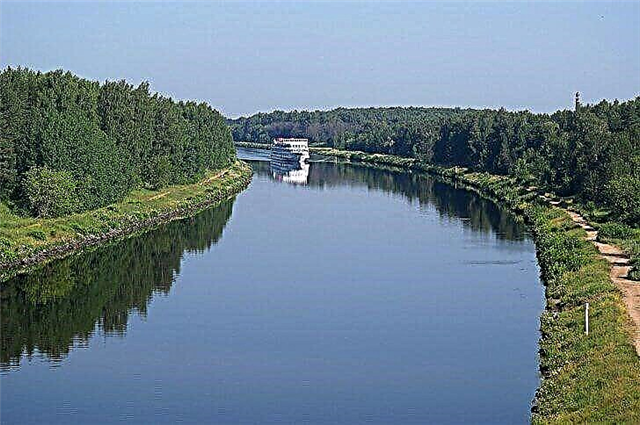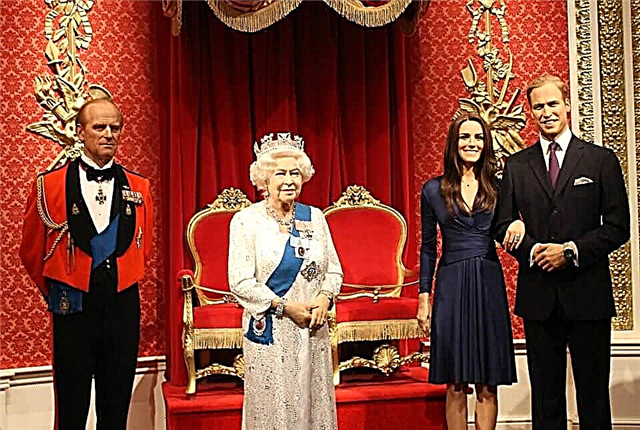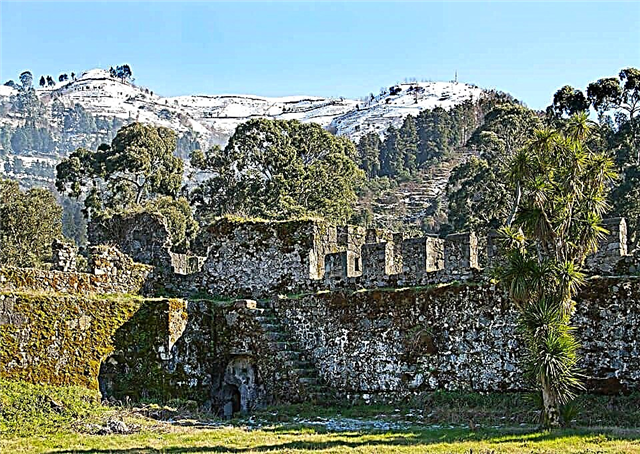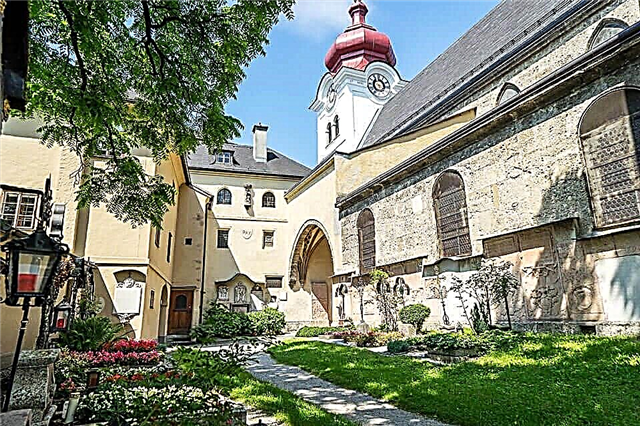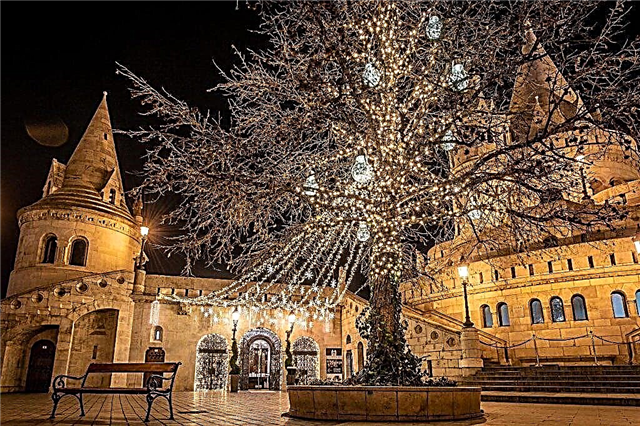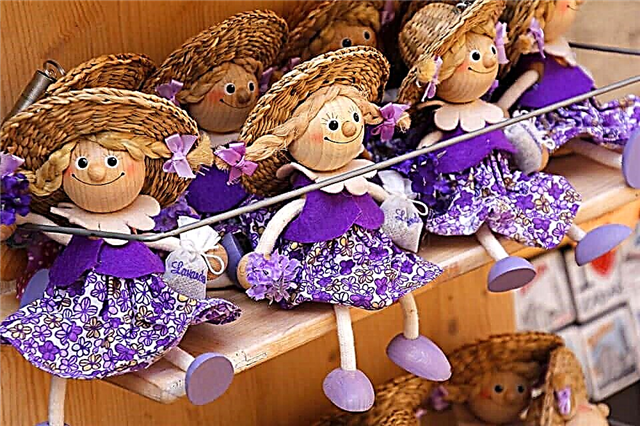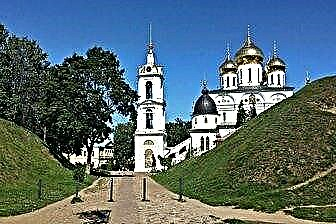Dmitrov is one of the ancient cities of the Moscow region: it is only 7 years younger than the capital. The construction of the Moscow Canal also made the city a port city. So you can travel here by water. The Great Patriotic War left its mark on the history of Dmitrov. In 1941, battles took place at Peremilovskaya height in its vicinity. Their outcome did not give the Nazis a direct attack on Moscow. This feat was marked by the addition of Dmitrov to the number of cities of military glory.
The main attractions are the Kremlin and numerous Orthodox sites. Some churches were not closed even in Soviet times and were able to preserve their unique relics. The Dmitrov Kremlin has become a museum-reserve, and its exhibits cover an impressive period of time and fully tell about the history and culture of the region.
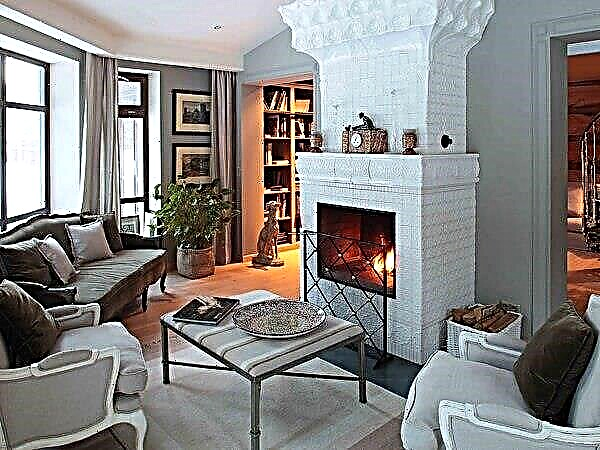
The best hotels and hotels at affordable prices.
from 500 rubles / day
What to see and where to go in Dmitrov?
The most interesting and beautiful places for walking. Photos and a short description.
Dmitrov Kremlin
Recognized as a historical monument of the XII century. It was the residence of local princes. Not long in different periods was in the possession of Poles and Lithuanians. Each of the objects preserved on the territory of the Kremlin is an independent attraction. The Assumption Cathedral and the earthen rampart stand out especially. The length of the latter is 980 meters. The main entrance to the Kremlin is the Nikolsky Gate, recreated in our time.

Assumption Cathedral
Built in the early years of the 16th century. The architecture of the cathedral is influenced by the Italian style. Presumably the project could be handled by masters from Europe. Several restorations have changed the original appearance of the temple. The most significant restructuring took place in the 19th century. After the Bolsheviks came to power, the spire and bells were destroyed. The painted walls, as well as the 17th century iconostasis, have miraculously survived.

Soviet square
Located in front of the Kremlin. In the past it was called Upper and Revolution Square. It became Soviet in the 1920s. Several fountains have been installed, operating in summer. Nearby there is a promenade lined with shopping buildings and cafes. Mass cultural events are held on the square. A prefab scene appears here these days. The territory was restored in 2004 for the anniversary of the city.

Monument to Yuri Dolgoruky
Installed on Sovetskaya Square. Yuri Dolgoruky founded the city. The sculpture is dated 2001. Dolgoruky stands with his back to the entrance to the Kremlin. On the opposite side of the square there is a monument to Lenin since 1950. The leader of the world proletariat and the prince point to each other. This amusing coincidence has given rise to many interpretations of the gesture and jokes among the locals.

Kropotkinskaya street
Located near the Kremlin. Named after researcher and anarchist Pyotr Kropotkin. The street is famous primarily for its sculptures. Installation time - 2003. The style of all the figures is the same, but they represent representatives of different classes and even centuries. On Kropotkinskaya there is a gardener with a cat, strolling nobles, a merchant and a merchant's wife, a teacher and other colorful characters.

Museum of Local Lore of Dmitrov Region
The reserve museum was opened in 1918. It is partially located on the territory of the Dmitrov Kremlin and bears the corresponding name. In total, 12 buildings are included in the unified structure of the museum. Funds - 40 thousand storage units. Among the exhibits: icons, oil painting, graphics, porcelain, furniture, weapons. The museum and exhibition complex was commissioned in 2004. The permanent exhibition tells about Dmitrov from the 18th century to the present day.

House-Museum of P.A.Kropotkin
Branch of the "Dmitrov Kremlin". The researcher and anarchist Pyotr Kropotkin spent the last years of his life in this house. The mansion has an attic. The rooms have recreated the atmosphere of the beginning of the last century. The collection is divided into several exhibitions. One of the exhibitions is dedicated to Count Olsufiev, who previously owned the house. The decision to create a museum was made in 1991, and it received its first visitors only in 2014.

Theater "Big Nest"
In 1967, a creative team was created. It remained an amateur theater until 1991. Upon receiving a new status, the "Big Nest" also acquired a room in the district Palace of Culture. The troupe is small - only 14 professional actors. The repertoire is classic, but in interpretation. Performances are staged for young spectators. The theater participates in major festivals and shows.
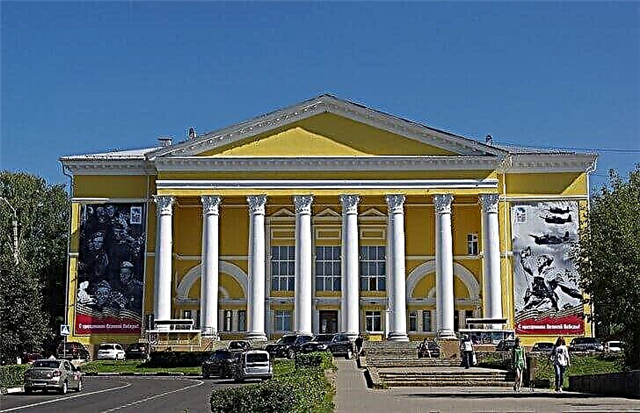
Borisoglebsk Monastery
There is no exact date of foundation, although the monastery is mentioned in chronicles from the 15th century. There is a version that the monastery was founded by Yuri Dolgoruky. On the territory, in addition to the Cathedral of Boris and Gleb, there is a chapel, monastic cells, St. Nicholas Church, and a refectory. Old buildings coexist with modern ones. The main relic is a particle of the Holy Cross. Because of her, thousands of pilgrims come here every year.

Monument to Saints Boris and Gleb
In 2006, the grand opening of the monument took place. Its creation was timed to the anniversary of the monastery, which bears the name of these two saints. The sculptor A. Rukovishnikov decided to depict Boris and Gleb in military attire to emphasize their contribution to the protection of their native lands. The pedestal has an unusual shape. The "roof-arc" stands out especially. Bronze figures on horses were consecrated by representatives of the Russian Orthodox Church.

Kazan Church
Year of foundation - 1644. A century later, a new temple appeared on this place. Subsequently, a chapel was erected nearby, as well as a warm border of the icon "Joy of All Who Sorrow". The main relic is a copy of the Life-giving Cross of the Lord. During the Soviet period, the church was not closed and was not subjected to persecution or encroachment on values. An Orthodox library and a Sunday school are open at the church.

Vvedenskaya church
Mentioned for the first time in 17th century manuscripts. The building was wooden and was replaced by a stone one in the 18th century. In 1832, a three-tiered bell tower was built; later, one more "floor" was added to it. The original decoration of the temple was very rich. During the Soviet era, the church was not closed. Among the relics are valuable icons, personal belongings and a lock of hair from the tonsure of the holy martyr Seraphim.

Trinity Church
Recognized as a monument of architecture and history. It was erected at the turn of the 18th-19th centuries. The building plan includes a refectory and a bell tower. The architectural style is a mixture of baroque and classicism. After the revolution, the temple was closed. It gradually deteriorated and remained inoperative until 1996. The bells rang again after the reconstruction. The greatest value is the Tikhvin Icon of the Mother of God.

Sretenskaya church
A wooden church was built on this site in the 17th century. It fell into decay without outside help, and after the victory in the war of 1812, they decided to build a new temple here. The idea was sponsored by local merchants. Two years later, the church received its first parishioners. In Soviet times, all the valuables were taken out, the building itself was taken as a warehouse for grain. In 1992 he was returned to the Russian Orthodox Church. The temple is now operational.
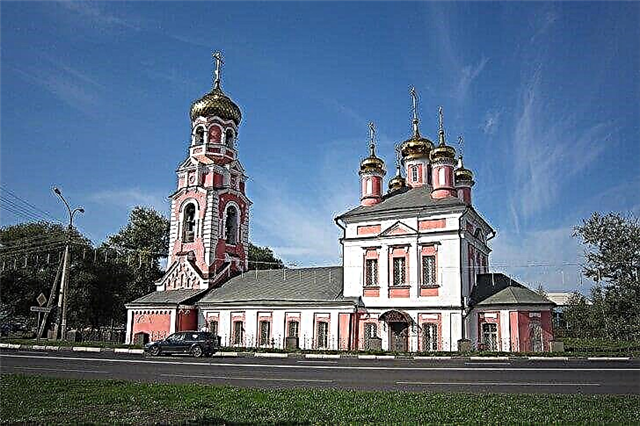
Nikolo-Peshnoshsky monastery
Located in Yakhroma. The monastery was founded by one of the students of Sergius of Radonezh in 1361. Two centuries later, the heyday of the monastery began. The monks themselves provided for themselves, thanks to trade, and representatives of noble families also gave them money. In Soviet times, the monastery was closed, and some of the buildings were given to museums and a home for the disabled. Since 2007 it has been operating.

Railway station building
Although the building was completed in 1887, the station did not open until 13 years later. The project is typical for central Russia.However, the structure lacks towers and spiers, which is not typical for other similar objects. On the right are suburban ticket offices, on the left is the waiting room. Attentive tourists can discern traces of ancient Russian architecture in the architecture. However, renovations and modern painting have kept such details to a minimum.

Park "Birch Grove"
The creation of the park is associated with the construction of the Moscow Canal. Initially, there was an ordinary forest belt here. Only in 1966 did the park receive an official status and its current name. For the next two decades, the entertainment areas were designed in the form of attractions. At the same time, a summer stage and a cafe were built. Already in our century, a large reconstruction took place, which made it possible to modernize the park and attract more visitors.
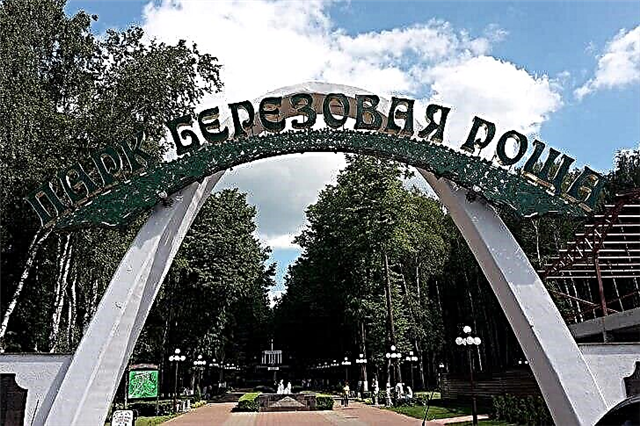
Peremilovskaya height (Yakhroma)
Located in Yakhroma, from where it is only one and a half kilometers to Dmitrov. In 1941, battles between the Soviet army and fascist troops took place here. Not surrendering the height, domestic soldiers were able to prevent a direct and lightning-fast attack on the capital. In memory of those events, a memorial was erected in 1966 - the figure of a soldier rushing into battle. The total height of the bronze monument with a pedestal is 28 meters.

Ski resort "Sorochany"
Built on the slopes of the Klinsko-Dmitrovskaya ridge. Due to its convenient location and reasonable prices, it is one of the most popular centers for active recreation in the Moscow region. In winter, several types of trails are open, an open-air skating rink, a cable car. The season runs from December to April. The resort continues to operate in the summer. Sports grounds, rental housing, water attractions are available.

Moscow channel
Dmitrov is located almost in the middle of the canal's design plan. The total length of the artificial waterway is 128 km. Locks, dams, hydroelectric power stations, bridges have been erected along the entire length. And the water from the Volga is "pumped" with the help of special pumps. Construction took place in the 30s of the last century. At the same time, the canal became navigable. The work was carried out quickly, and the prisoners of a specially created camp worked here.
